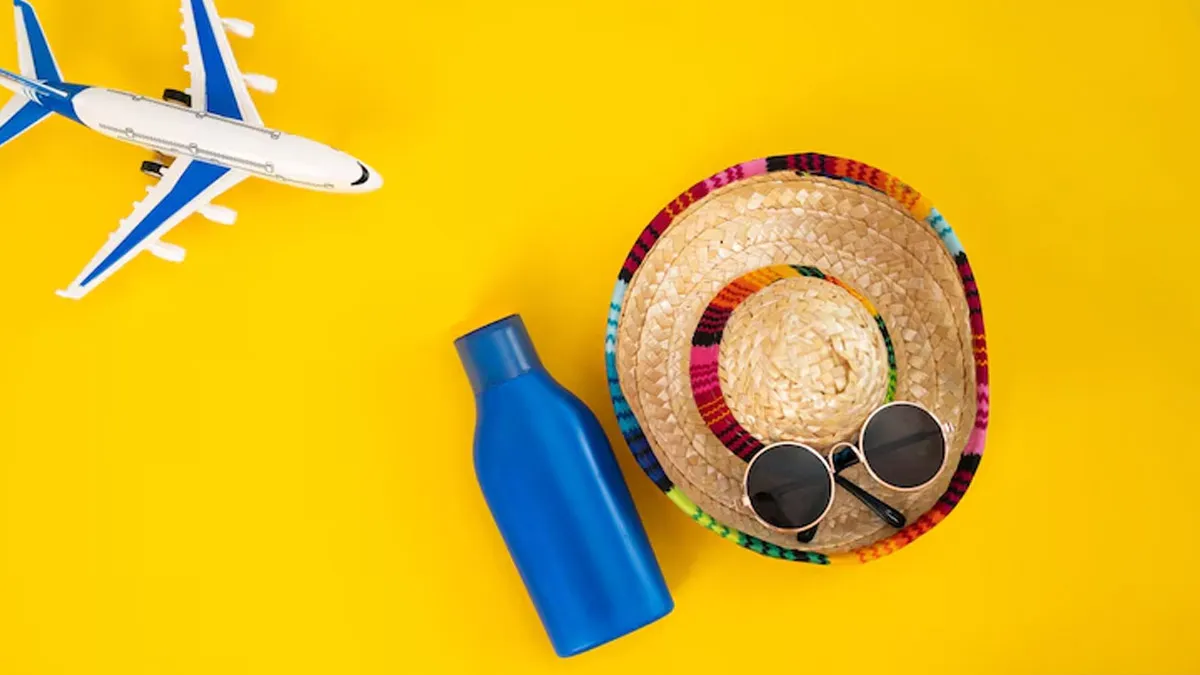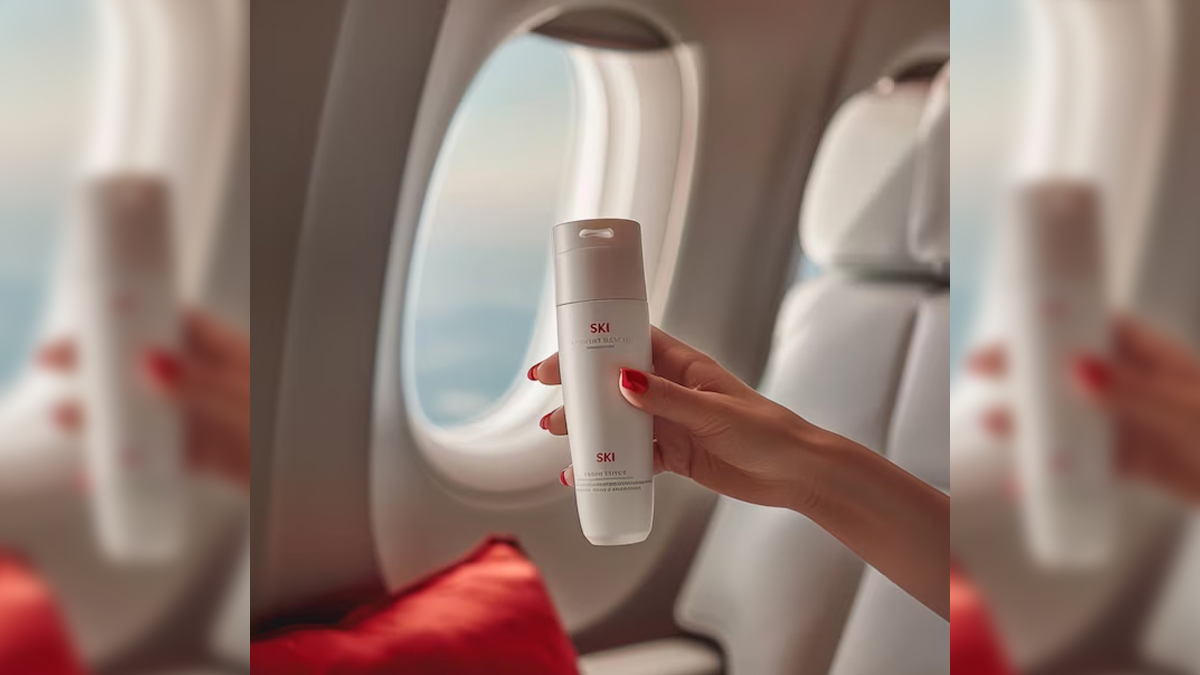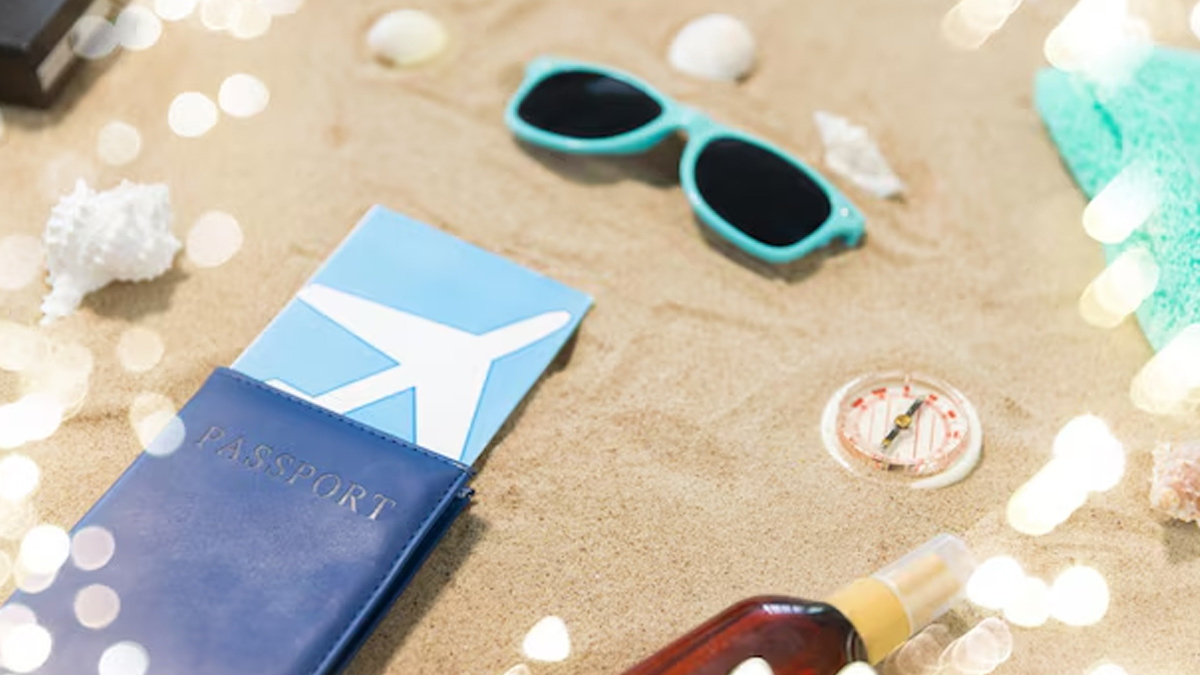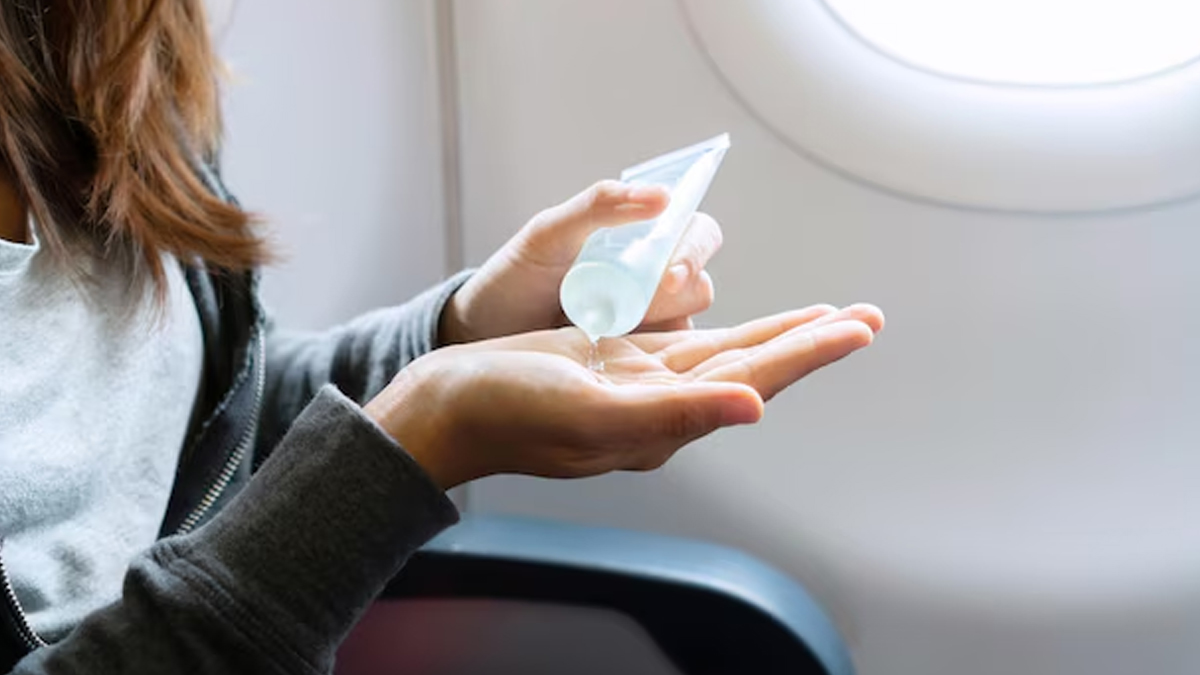
Most people don’t think about sun protection when they’re flying, but they actually should. At 30,000 feet, you're not just above the clouds; you're also above much of the Earth’s natural UV protection. According to Dr Manjusha Agarwal, Senior Consultant – Internal Medicine, Gleneagles Hospital, Mumbai, the risk of Ultraviolet (UV) exposure increases significantly during air travel, especially if you're seated by the window on a daytime flight. From sunscreen to smart seat choices, here’s what you need to know to protect your skin while you fly.
Table of Content:-
Also Read: What To Apply On Face Before Sunscreen, According to Dermats!
Does Flying At High Altitudes Increase UV Risk?

According to Dr Agarwal, when you're cruising at 30,000-40,000 feet, the Earth’s protective atmosphere is much thinner. This means more UV rays, especially UVA and UVB, can penetrate and reach you. In fact, UV radiation levels at that altitude can be up to twice as high as they are at ground level. This increased exposure, combined with reflective surfaces like clouds or snow, can intensify the radiation even further, making in-flight UV protection especially important, particularly on long, daytime flights.
Should You Apply Sunscreen During Long Flights?

Applying sunscreen during long flights is crucial. While airplane windows are designed to block most UVB rays, the ones responsible for sunburn, they don’t fully block UVA rays, which penetrate deeper into the skin and are known to accelerate ageing and increase long-term skin damage risk.
If you’re seated by the window, you’re still vulnerable to UVA exposure, especially on sunny routes or when flying over reflective terrains.
Dr Agarwal recommends applying a broad-spectrum sunscreen with at least SPF 30, particularly one that offers UVA protection. Mineral sunscreens containing zinc oxide or titanium dioxide are ideal for their skin-friendly, effective coverage. And because airplane cabins are dry, reapplying sunscreen and using a hydrating moisturizer can help maintain your skin barrier during flight.
Also Read: Can You Use Retinol And Sunscreen Together In Summer? Find Out Here
How To Protect Yourself From the Sun In A Plane

Beyond sunscreen, there are several simple steps you can take to shield your skin while flying:
- Keep the window shade down, especially on sunny flights or when flying over reflective surfaces.
- Wear protective clothing, such as long sleeves or a lightweight scarf, to cover exposed skin.
- Use UV-blocking sunglasses to protect your eyes and the delicate skin around them.
- Stay hydrated and apply moisturiser to combat the cabin's dry air, which can weaken your skin’s natural barrier.
- While newer aircraft may use more UV-resistant window materials, protection levels still vary by airline and aircraft model—so it’s best not to rely solely on the window to shield your skin.
Conclusion
Flying high may get you to your destination faster, but it also brings you closer to the sun's harmful rays. Whether you're a frequent flyer or planning a long-haul daytime flight, being proactive about UV protection is crucial. Apply sunscreen, cover up, and keep those shades down to protect your skin at 30,000 feet and beyond.
Also watch this video
How we keep this article up to date:
We work with experts and keep a close eye on the latest in health and wellness. Whenever there is a new research or helpful information, we update our articles with accurate and useful advice.
Current Version